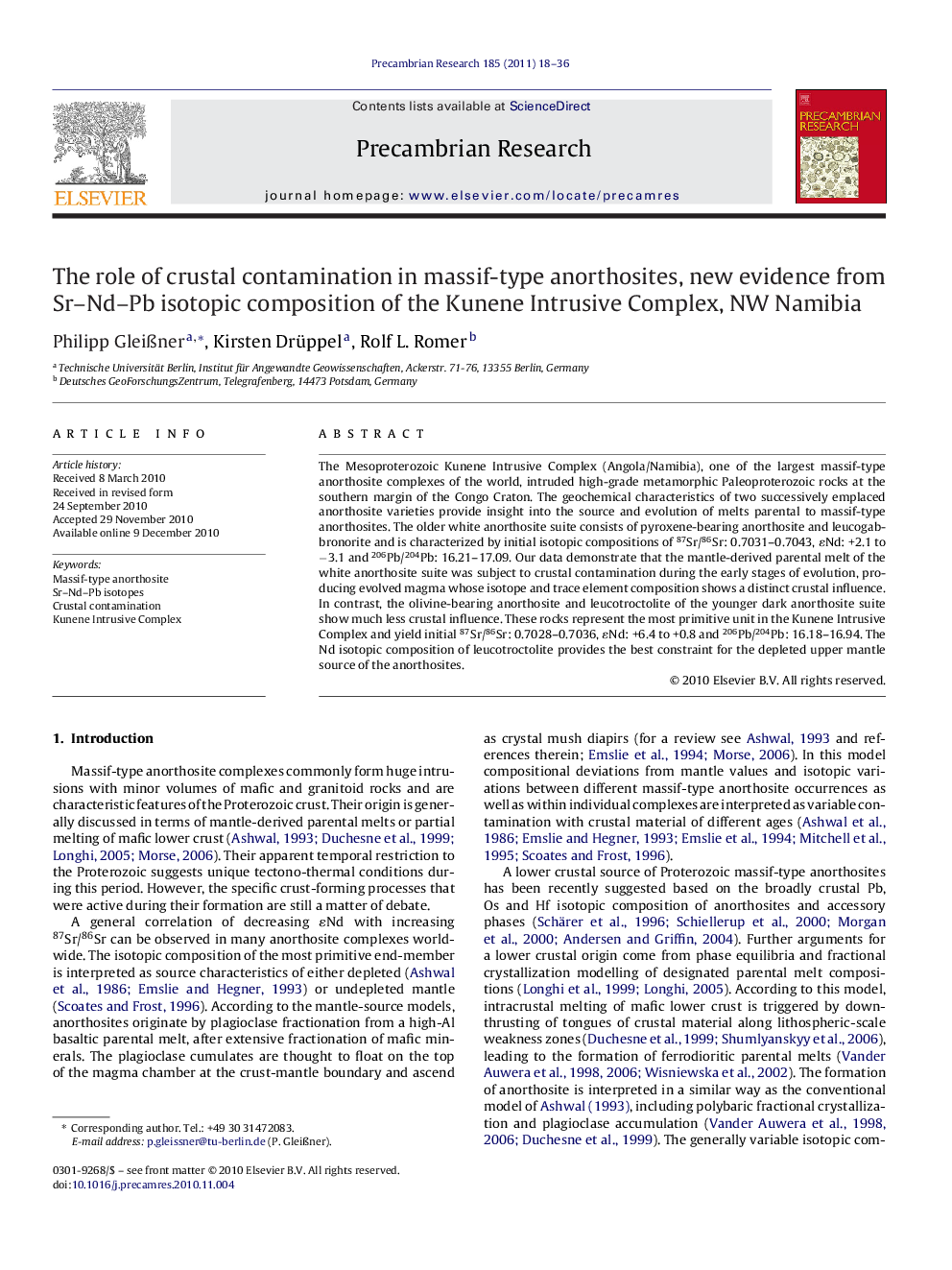| Article ID | Journal | Published Year | Pages | File Type |
|---|---|---|---|---|
| 6442446 | Precambrian Research | 2011 | 19 Pages |
Abstract
The Mesoproterozoic Kunene Intrusive Complex (Angola/Namibia), one of the largest massif-type anorthosite complexes of the world, intruded high-grade metamorphic Paleoproterozoic rocks at the southern margin of the Congo Craton. The geochemical characteristics of two successively emplaced anorthosite varieties provide insight into the source and evolution of melts parental to massif-type anorthosites. The older white anorthosite suite consists of pyroxene-bearing anorthosite and leucogabbronorite and is characterized by initial isotopic compositions of 87Sr/86Sr: 0.7031-0.7043, ÉNd: +2.1 to â3.1 and 206Pb/204Pb: 16.21-17.09. Our data demonstrate that the mantle-derived parental melt of the white anorthosite suite was subject to crustal contamination during the early stages of evolution, producing evolved magma whose isotope and trace element composition shows a distinct crustal influence. In contrast, the olivine-bearing anorthosite and leucotroctolite of the younger dark anorthosite suite show much less crustal influence. These rocks represent the most primitive unit in the Kunene Intrusive Complex and yield initial 87Sr/86Sr: 0.7028-0.7036, ÉNd: +6.4 to +0.8 and 206Pb/204Pb: 16.18-16.94. The Nd isotopic composition of leucotroctolite provides the best constraint for the depleted upper mantle source of the anorthosites.
Related Topics
Physical Sciences and Engineering
Earth and Planetary Sciences
Geochemistry and Petrology
Authors
Philipp GleiÃner, Kirsten Drüppel, Rolf L. Romer,
